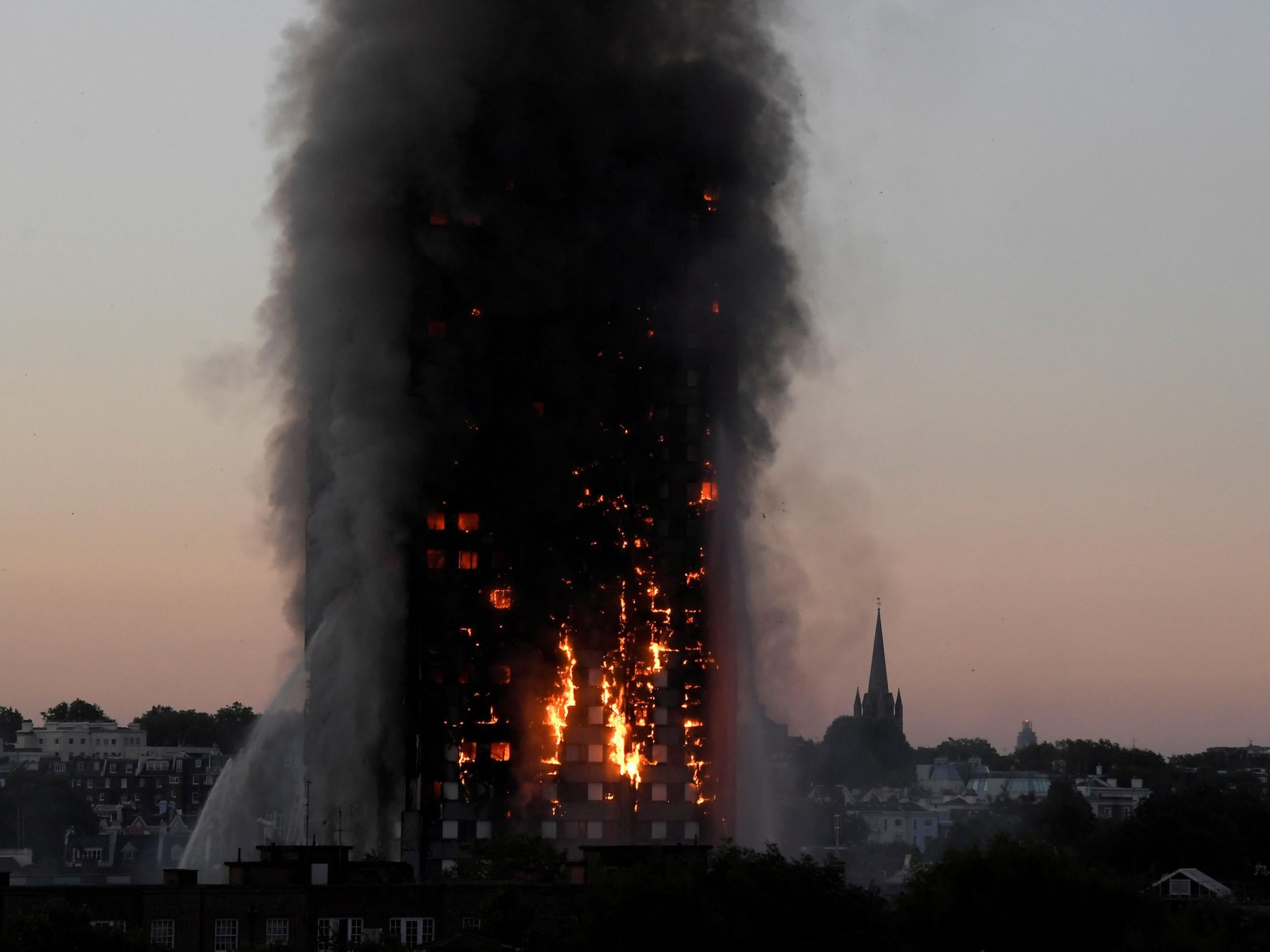Grenfell Tower: Only three of the nearly 300 tower blocks deemed unsafe have new cladding installed, admits government
Ministers criticised for 'not good enough' response after hundreds of tower blocks fail safety tests

Your support helps us to tell the story
From reproductive rights to climate change to Big Tech, The Independent is on the ground when the story is developing. Whether it's investigating the financials of Elon Musk's pro-Trump PAC or producing our latest documentary, 'The A Word', which shines a light on the American women fighting for reproductive rights, we know how important it is to parse out the facts from the messaging.
At such a critical moment in US history, we need reporters on the ground. Your donation allows us to keep sending journalists to speak to both sides of the story.
The Independent is trusted by Americans across the entire political spectrum. And unlike many other quality news outlets, we choose not to lock Americans out of our reporting and analysis with paywalls. We believe quality journalism should be available to everyone, paid for by those who can afford it.
Your support makes all the difference.Dangerous cladding similar to that used on Grenfell Tower has been removed from only a fraction of the tower blocks deemed unsafe following the disaster, the Government has said.
The Department for Housing, Communities and Local Government confirmed that, while 299 of the 312 buildings tested in recent months have failed safety assessments, only 26 have had the dangerous cladding fully removed, and just three have had replacement panels installed.
Work to remove the hazardous materials is underway on a further 31 buildings, while nine of the 26 are in the process of installing new cladding after having removed the unsafe panels.
It comes amid an ongoing row over who should fund the cost of fire safety improvements to tower blocks. The Government has pledged to cover the cost of essential work but has rejected a number of requests from local councils, telling them the work is either not essential or not the responsibility of central government.
Answering questions from MPs on Monday, Sajid Javid, the Housing, Communities and Local Government Secretary, said: “The Government will consider financial flexibilities for local authorities to undertake essential fire safety work to make buildings safe.
"We have not turned down any requests for such flexibilities.”
Mr Javid said the “number one priority” in the wake of the Grenfell disaster was to make sure “everyone and anyone living in any tower that might have similar cladding feels completely safe [and]to make sure those buildings are properly tested.”
He said replacing dangerous cladding would “take time” but that other measures had been put in place in the meantime, including round-the-clock fire wardens. There was a “clear moral case” for private landlords covering the cost of safety work rather than leaving it to tenants, he added.
However, Labour accused the Government of failing to protect people in tower blocks similar to Grenfell.
John Healey, the Shadow Housing Secretary, said: “More than seven months after the Grenfell Tower fire, it should shame ministers that only three tower blocks with dangerous cladding have been replaced.
“Ministers have been off the pace at every stage in their response to the terrible fire at Grenfell Tower.
“Only one in four Grenfell survivors have a new permanent home, the Government still can’t confirm how many high-rise buildings are unsafe and ministers are refusing to help with any funding for essential fire safety work in the blocks they do know are dangerous. It’s simply not good enough.”
The aluminium composite material (ACM) cladding used on Grenfell Tower is thought to have aided the rapid spread of the fire, which killed 71 people.
Following the disaster, the Government arranged for testing to take place on buildings that had a combination of cladding and insulation similar to that used on Grenfell.
The 299 buildings that subsequently failed tests are in 63 different council areas in England and more than half the affected buildings are social housing blocks managed by local councils or housing associations.
Join our commenting forum
Join thought-provoking conversations, follow other Independent readers and see their replies
Comments